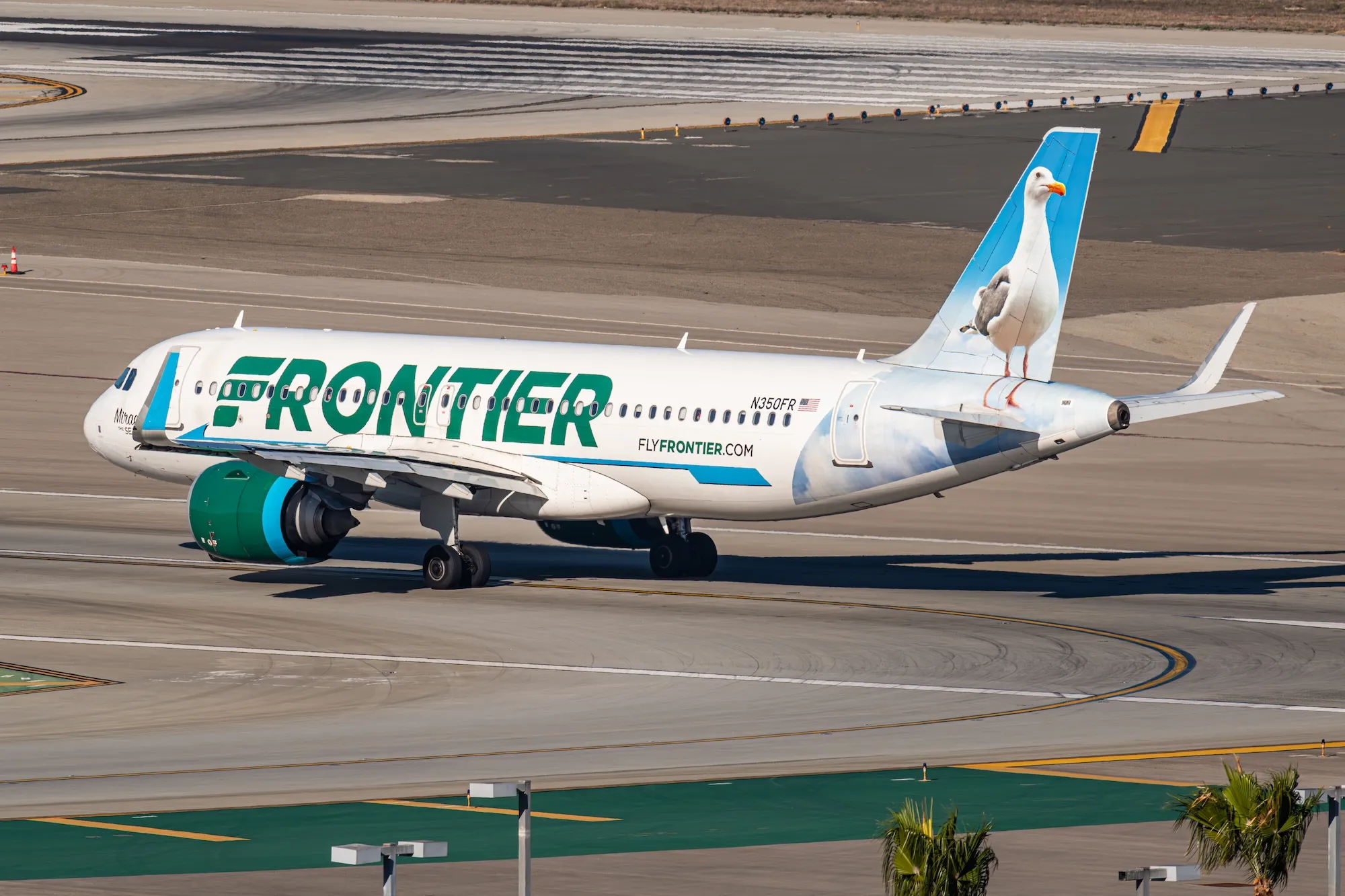DENVER — Frontier Airlines (F9) wrapped up Q2 2025 under some heavy economic pressure, but the ultra-low-cost player managed to stay the course.
Revenue and yields took a hit thanks to broader market conditions, but it wasn’t all bad news. The airline made progress in several key areas, including updating its fleet, growing loyalty numbers, and improving fuel efficiency.
The US$70 million net loss wasn’t a surprise, and with strong liquidity plus a lean cost base, F9 looks ready to tough it out and aim for a stronger 2026..
Financial Summary
- Revenue slipped 5% year-over-year to US$929 million, reflecting a 2% drop in capacity, primarily due to schedule cuts and softer pricing trends in the market.
- The airline posted a net loss of US$70 million (–$0.31 EPS), which stemmed from reduced aircraft utilization, lukewarm demand in certain regions, and timing around leaseback gains.
- CASM rose to 9.73¢, while CASM-ex-fuel hit 7.50¢, driven by higher fixed costs being spread over fewer flights.
- RASM held steady at 9.01¢ but nudged up slightly on a stage-length-adjusted basis (around 8.74¢).
- By quarter-end, Frontier had US$766 million in total liquidity, US$561 million in cash, and US$205 million in untapped credit, giving it a substantial buffer to ride out near-term challenges.
Fleet Strategy: Neo-Powered, Future-Focused
Frontier continued its commitment to fleet standardization and fuel savings:
- Took delivery of three new A321neo jets, bringing the fleet total to 164 aircraft.
- Now operates with 84% A320neo-family aircraft, the highest among major U.S. carriers, and has a significant fuel burn advantage.
- Maintained its title as “America’s Greenest Airline” by delivering 106 ASMs per gallon of fuel, a key ULCC metric in the sustainability era.
- In a pivotal move, Frontier finalized its engine strategy: It will power its remaining 91 A321neo orders with Pratt & Whitney GTF engines, expanding its GTF fleet commitment to 235 aircraft. This will simplify maintenance, improve commonality, and sustain operating cost advantage through the decade.
Commercial Expansion
Despite a demanding fare environment, the airline made notable commercial moves:
- Launched 35 new routes in Q2, including key city pairs like Baltimore to O’Hare, Myrtle Beach to Trenton, and nine new services from Atlanta, reinforcing its East and Midwest market positions.
- Strengthened its loyalty ecosystem with a new “free unlimited companion travel” perk for top-tier elite members, fueling a 19% YoY increase in cardholder spend.
- Passenger load factor climbed to 79.3%, up 1 point YoY, suggesting steady base demand despite pricing pressures.
CEO View
CEO Barry Biffle remained measured yet confident. He highlighted:
- Second-quarter performance was “within expectations” despite May–June ATC delays and weather events, which caused notable operational disruptions.
- Domestic market conditions are stabilizing, with supply/demand equilibrium improving, particularly in off-peak leisure.
- Frontier expects RASM to grow mid-to-high single digits (on a stage-adjusted basis) in Q3, backed by route maturing, tighter schedules, and ancillary upsell programs.
Q3 2025 Guidance: Still Navigating Rough Air
- Capacity forecast: Down 4–5% YoY, reflecting cautious growth and planned optimization.
- Adjusted EPS: Expected loss between –$0.26 and –$0.42, driven by continued fuel volatility and uneven yield recovery.
- Fuel cost estimates: US$2.51/gallon in Q3 and US$2.41/gallon in Q4, adding pressure to margins.
What’s Fueling the Long-Term Strategy?
Even with near-term loss, F9r’s strategic assets position it well:
- Fleet simplicity and efficiency: Leaner than any legacy or hybrid operator.
- Sustainability narrative: High ASM-per-gallon allows for regulatory flexibility and PR leverage.
- Strong liquidity: Enables patient growth and agility.
- Cost culture: The airline remains one of the most disciplined ULCCs in managing overhead, labor, and supplier contracts.
Bottom Line: A Quarter of Foundation Laying
While the numbers may be in the red, F9’s second quarter wasn’t about short-term wins; it was about playing the long game. From engine agreements to elite-tier upgrades and network bets like Atlanta, the airline leaned into smart, survival-focused moves.
2025 is about staying lean and getting stronger. If all goes to plan, 2026 could be when those bets start paying off.
Stay tuned and keep following Airways. Follow us on LinkedIn and Instagram for the latest updates!




